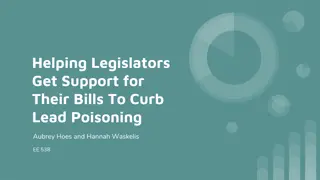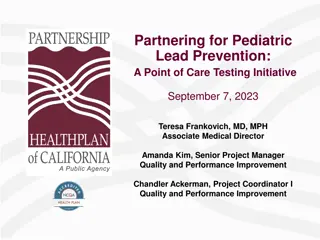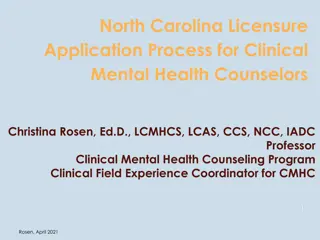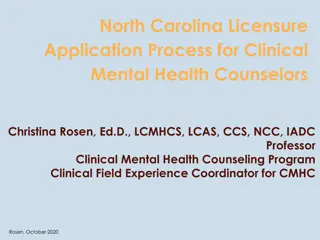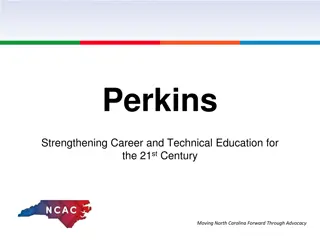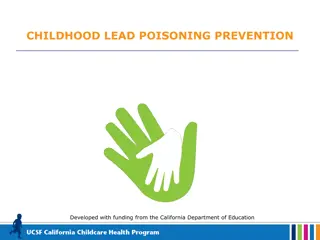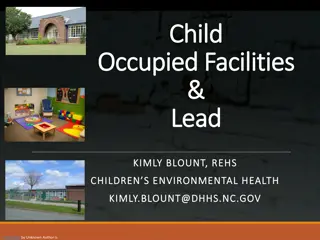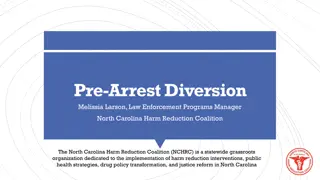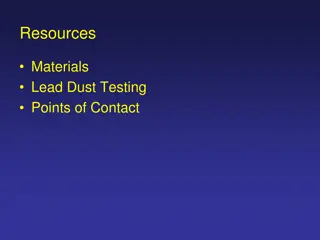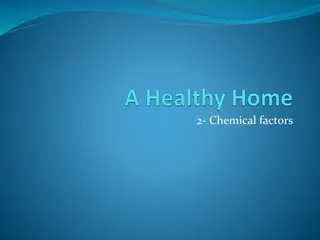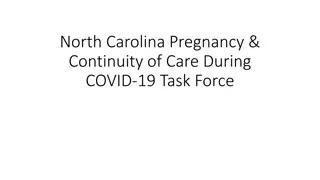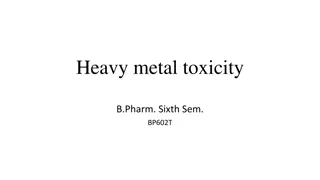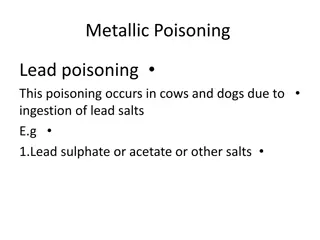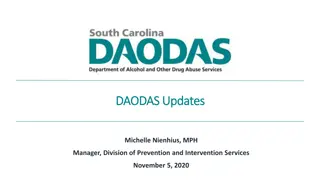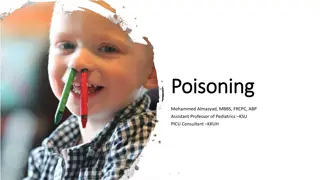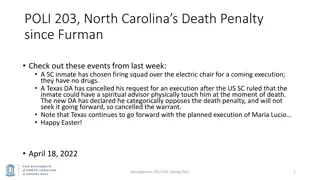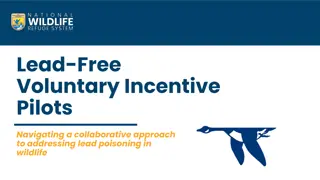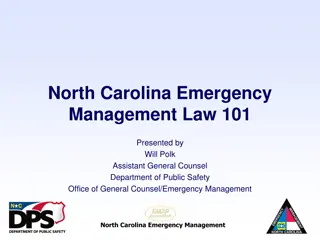North Carolina Childhood Lead Poisoning Prevention Program Updates
The North Carolina Childhood Lead Poisoning Prevention Program, managed by Ed Norman, MPH, is implementing proposed temporary rules and receiving funds for lead testing and remediation. Public schools and licensed child care facilities are affected by the regulations, with specific requirements for testing and abatement of lead hazards. Restrictions and guidelines for accessing funds are outlined, including deadlines for obligation and spending. Proposed rules address definitions, funding eligibility, asbestos inspections, lead-based paint abatement, and more.
Download Presentation

Please find below an Image/Link to download the presentation.
The content on the website is provided AS IS for your information and personal use only. It may not be sold, licensed, or shared on other websites without obtaining consent from the author. Download presentation by click this link. If you encounter any issues during the download, it is possible that the publisher has removed the file from their server.
E N D
Presentation Transcript
The North Carolina Childhood Lead Poisoning Prevention Program Ed Norman, MPH Program Manager NC Department of Health and Human Services Division of Public Health Environmental Health Section ed.norman@dhhs.nc.gov (919) 707-5951
Proposed Temporary Rules (10A NCAC 41C .1001) Session Law 2021-180 $150 million/American Rescue Plan Act (ARPA) funds appropriated $32,812,500 for lead in water testing and remediation $117,187,500 for lead paint and asbestos inspection and abatement
Whos affected? Public schools are required to test all drinking water and food preparation faucets following the same model used by child care centers pursuant to 15A NCAC 18A .2816. Funds not used for testing are available for remediation of hazards identified at public schools and licensed child care facilities. Inspection for lead paint and asbestos is required for all public schools and licensed child care facilities. Funds not used for inspection are available for abatement of hazards identified at public schools and licensed child care facilities.
Are there restrictions? Abatement funds for lead paint and asbestos are available to eligible public schools and licensed child care facilities. However, participation is not required. For lead paint and asbestos funds allocated, public schools must provide a match ($1 local for every $2 state). Child care facilities do not have to provide a match, and there is no match required for water remediation at schools or child care facilities. Funds must be obligated by 12/31/2024 and spent by 12/31/2026.
Proposed Rule .1001 Definitions Proposed Rule .1002 Funding Establishes eligibility criteria for remediation and abatement funds: 1) Testing deadline met; and 2) Lead poisoning or asbestos hazards identified Proposed Rule .1003 Asbestos Inspections and Abatement / Letter from architect exemption Proposed Rule .1004 Lead-Based Paint Inspections and Abatement / Post February 1978 exemption Proposed Rule .1006 Certified Risk Assessors Proposed Rule .1007 Incorporation by Reference
Proposed Rule .1005 Lead in Water Testing and Remediation Modeled closely on 15A NCAC 18A .2816 One-time testing Initial samples collected by school Testing completed with 24 months EPA 3Ts sampling methodology used Notification required, restrict access, provide alternative water CEH regional staff or local REHSs collect follow-up/clearance samples for any elevated initial samples Within 5 days of an elevated follow-up sample, notification of parents and staff and test results made publicly available Restrictions continue until lead hazards (>10 ppb) remediated
Where are we in the Process? Temporary rules proposed and approved by the Commission for Public Health Public hearing and comment period have ended Rules Review Commission meeting on April 21, 2022 DPH staff has developed an FAQ document Other Issues: Modifying follow-up sampling protocol to reduce site visits by regional staff and LHDs Lead service line replacement funds may be available from DEQ $1 million aid-to-county proposed for support with follow-up sampling and consultation







